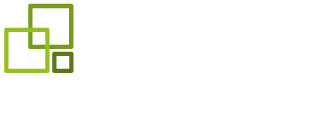Top 74 Coaching Questions
On this page you will find 74 of the best coaching questions to use in your coaching sessions, or workshops and team meetings – and to achieve deeper understanding and better results. The coaching questions are grouped into 9 categories to make them easier to find and easier to navigate. Below you will not only find the questions (with references to the source), but also an explanation of the category, helpful examples, and what you should bear in mind.
Table of Contents
Toggle
Coaching questions in 9 categories
The coaching questions presented on this page are grouped into 9 categories. Collectively, they form a holistic approach to coaching, addressing various dimensions of personal and professional development. They provide a structured framework for coaches to tailor their approach based on the unique needs and goals of the individuals they work with.
After (almost) every coaching question you will find the name of an author. This serves as a reference to the list of book recommendations below, in which each entry of course also names the author or authors.
Action and Implementation
Action and Implementation involve translating vision and goals into tangible steps. Coaches support individuals in building on past successes and applying lessons learned. In a business context, this could mean a manager identifying successful project management strategies from previous endeavors.
The coach may guide them in implementing similar approaches in current projects, ensuring a more streamlined and effective execution. This category emphasizes the practical application of insights and experiences to achieve tangible, positive outcomes.
- “What is the first step you can take right now?” – Hanson
- “What has worked well for you in similar situations, and how can you apply those successes here?” – Cooperrider
- “What is the smallest, most manageable action you can take right now to move forward?” – Cooper
- “What’s the next smallest thing you can do to move forward?” – Aguilar
- What is distracting you from achieving your goal – and how can you remove it? – Mika
- “What options do you have, and what will you do?” – Cooper
- “What is the first step you can take right now to move closer to your goal?” – Aguilar
- “How can you make this happen?” – Aguilar
- “What are your options, and what will you do?” – Cooper
- “What is the next smallest thing you can do to move closer to your goal?” – Aguilar
- “How can you build on your past successes to create future achievements?” – Cooperrider
- If we are dealing with a critical or difficult process – what would it mean to first simulate it behind closed doors, i.e. to do a dry run, and to learn and train? – Mika
Communication and Relationships
Effective communication and relationship-building are fundamental aspects of personal and professional success. In a coaching context, this involves identifying support systems and networks for guidance.
For example, a team leader might work with a coach to enhance communication within their team, fostering a collaborative environment. The coach could facilitate exercises that improve interpersonal skills and help the leader identify supportive networks both within and outside the organization.
- “How can you communicate your expectations effectively to others involved?” – Stoltzfus
- “How can you build trust and rapport with others involved in this situation?” – Stoltzfus
- “How can you incorporate feedback from others to enhance your performance?” – Stanier
- “What support systems or networks can you tap into for guidance and assistance?” – Cooper
- “What assumptions are others making, and how can you clarify or challenge those assumptions?” – Cooper
Decision making
The Decision Making category in coaching involves using targeted questions to guide individuals in making significant choices aligned with their values and goals. In a business context, a leader facing a strategic decision, such as market expansion, might be asked, “How does this decision align with your long-term vision for the company?” This question connects the decision to broader goals.
Additionally, questions like, “What are the potential risks and benefits of each option?” encourage a thorough analysis. Lastly, asking, “What values are crucial in guiding this decision?” ensures alignment with the leader’s core values, facilitating an informed and confident decision-making process.
- Apart from the options we are talking about here – are there any other options?
- How can you involve key stakeholders in the decision-making process to enhance collaboration and buy-in? – O’Neill
- Imagine that 5 years from now you are looking back at you taking this decision. From this perspective, how do these options look like to you?
- “What role does intuition play in your decision-making process, and how can you tap into it more effectively?” Stanier
- What emotions or fears might be influencing your decision-making, and how can you address them? O’Neill
- Think of a person who knows you quite well. What would this person think you would choose in the end – and why?
- What would it mean to pick none of the options you are looking at right now?
- If you had to explain your options, and their pros and cons, to a 14-year-old, what would you say?
- “What is the most important aspect of this decision, and how can you ensure it aligns with your values?” – Hanson
- “What is the most important thing for you about this goal or decision?” – Stoltzfus
Measurement and Reflection
This category emphasizes the importance of measuring progress, reflecting on outcomes, and adjusting strategies accordingly. In a business coaching context, a manager might set specific key performance indicators (KPIs) aligned with organizational goals.
The coach can assist in regularly assessing these metrics, reflecting on what’s working well, and making data-driven adjustments as needed. This iterative process ensures that individuals stay on track, learn from their experiences, and continuously refine their approaches for optimal results.
- “How will you measure success, and what indicators will let you know you’re on the right track?” – Hanson
- “What can you learn from past failures or setbacks, and how can you apply those lessons now?” – Hanson
Mindset and Empowerment
Mindset and Empowerment delve into the psychological aspects of coaching, fostering a growth mindset and empowering individuals to tackle challenges. In a business coaching scenario, this might involve shifting from a fixed mindset that perceives challenges as threats to an empowered mindset that views challenges as opportunities for growth.
For instance, a professional facing a restructuring process can work with a coach to reframe their perspective, focusing on how this change can lead to new opportunities for skill development and career advancement.
- “How can you maintain focus on your priorities in the face of distractions?” – Stanier
- “What self-care practices can you integrate to maintain your well-being during challenging times?” – Whitworth
- “What assumptions are you making that may be limiting your perspective?” – Stanier
- “How can you celebrate small wins along the way to keep yourself motivated?” – Hanson
- “What are your unique strengths, and how can you use them to overcome challenges?” – Stoltzfus
- “How can you leverage your strengths to overcome weaknesses or challenges?” – Stoltzfus
- “What strengths do you bring to this situation, and how can you leverage them?” – Cooperrider
- “How can you maintain a growth mindset and view challenges as opportunities for development?” – Aguilar
- “What are the strengths of the team or individual?” – Cooperrider
- “What do you believe is possible in this situation, and how can you expand that belief?” – Whitworth
- “How can you create a supportive environment for yourself and others involved?” – Cooper
- “How can you reframe challenges as opportunities for growth?” – Aguilar
- “What strategies can you implement to stay organized and focused on your priorities?” – Hanson
- “How can you create a positive mindset to overcome challenges and setbacks?” – Stanier
- “What does success feel like to you, and how can you bring that feeling into your current efforts?” – Cooperrider
- “What motivates you, and how can you use that motivation to propel yourself forward?” – Whitworth
- “How can you reframe a current challenge as an opportunity for learning and development?” – Aguilar
Overcoming Challenges and Obstacles
This category centers on resilience and problem-solving. Coaches help individuals navigate obstacles by breaking them down into manageable steps. In business coaching, overcoming challenges might involve addressing operational inefficiencies.
A coach can guide a business owner in identifying specific challenges, such as supply chain issues, and then collaboratively devising strategies to mitigate these challenges. By focusing on incremental steps and reframing challenges as opportunities for learning, individuals can build the confidence and skills needed to overcome obstacles effectively.
- “What is holding you back from taking the first step, and how can you overcome that obstacle?” – Hanson
- “What resources or support do you need to achieve your goals?” – Whitworth
- “How can you tap into your creativity to find innovative solutions?” – Cooper
- “How can you break down your goal into smaller, manageable steps?” – Stanier
Reflective and Exploratory
The Reflective and Exploratory category centers on self-discovery and deep exploration. Coaches guide individuals in understanding their wants, needs, and motivations. In a business coaching setting, this might involve exploring an executive’s deeper motivations behind a specific business decision.
Through reflective questioning, the coach helps uncover underlying values and beliefs, leading to a more comprehensive understanding of the individual’s decision-making processes.
- “What are the different perspectives or viewpoints on this issue, and how can you integrate them?” – Hanson
- “What is the real issue here for you?” – Cooper
- “What are the potential roadblocks, and how can you proactively address them?” – Hanson
- “What are the potential risks, and how can you mitigate them?” – Hanson
- “What’s on your mind?” – “And what else?” – Stanier
- “What learning opportunities can you identify in your current challenges?” – Cooperrider
- “What’s the most important thing to you about that?” – Stoltzfus
Values and Boundaries
- “How does this connect with your values?” – Stoltzfus
- “What are your non-negotiable values in this situation, and how can you honor them?” – Stoltzfus
- “What are your non-negotiable boundaries in this situation, and how can you communicate them effectively?” – Stoltzfus
- “What are your core values, and how are they reflected in your goals?” – Stoltzfus
Vision and Goal Setting
In the realm of coaching, the category of Vision and Goal Setting focuses on helping individuals clarify their aspirations and chart a strategic course. This involves understanding their long-term vision and breaking it down into manageable, actionable goals.
For instance, in a business coaching context, a leader might articulate their vision for organizational growth. A coach could then assist in defining specific, measurable goals, such as expanding market share or enhancing team collaboration. By aligning actions with this vision, the individual gains a clear roadmap for success, making their goals more achievable and motivating.
- “What would you like to have happen?” – Cooper
- “What is the bigger picture or long-term vision that this goal aligns with?” – Cooperrider
- “What is the most empowering way to frame your goals or challenges?” – Aguilar
- “What’s possible?” – Whitworth
- What is the opposite of your goal, the unwanted? Under what circumstances would it be completely impossible for this unwanted thing to occur / continue to exist? – Mika
- What would it mean to pursue a bigger goal than the one at hand – and to consciously accept the costs and setbacks involved? – Mika
- “What is the impact you want to have, and what steps can you take to achieve it?” – Aguilar
- “What do you want?” – Stanier
- “What is your vision for the future, and how can you align your actions with that vision?” – Whitworth
- “What do you really want?” – Stoltzfus
- “What are the consequences of not taking action, and how does that align with your goals?” – Whitworth
- “What do you want to accomplish, and why does it matter to you?” – Whitworth
- “What does success look like for you in this specific situation?” – Hanson

Sources & book recommendations
Almost all of the coaching questions above are taken from one or the other of several top coaching books. You can see exactly which books these are, and what they are about, below.
- “Co-Active Coaching“
by Laura Whitworth, Henry Kimsey-House, and Phil Sandahl
This book emphasizes the importance of open-ended questions that encourage self-reflection and exploration. - “The Coaching Habit: Say Less, Ask More & Change the Way You Lead Forever”
by Michael Bungay Stanier
This book introduces seven essential coaching questions. - “Leadership Coaching: The Disciplines, Skills, and Heart of a Christian Coach”
by Tony Stoltzfus
Stoltzfus emphasizes questions that promote self-discovery and align with personal values. - “The Art of Coaching: Effective Strategies for School Transformation”
by Elena Aguilar
This book covers a range of coaching scenarios. - “Appreciative Inquiry: A Positive Revolution in Change”
by David Cooperrider and Diana Whitney
Appreciative Inquiry involves positive, strengths-based questions. - “The Coaching Questions Handbook: 150 Powerful Questions for Life Coaching and Personal Growth”
by Tim Hanson
This handbook offers a variety of questions for different situations. - “The Five-Minute Coach: Improve Performance – Rapidly”
by Lynne Cooper and Mariette Castellino
This book focuses on quick coaching sessions with questions. - “Problem Solving for Professionals: 5 Steps and 60 Principles for Coaching, Consulting, and Business”
by Anatol Mika
This book provides an end to end process for solving difficult problems in a business context by identifying the core problem in 5 steps and then using 60 proven principles to develop workable solution ideas. - “Executive Coaching with Backbone and Heart“
by Mary Beth O’Neill
A guide that blends practical strategies with compassionate coaching approaches to help executives develop leadership skills and navigate challenges effectively.
